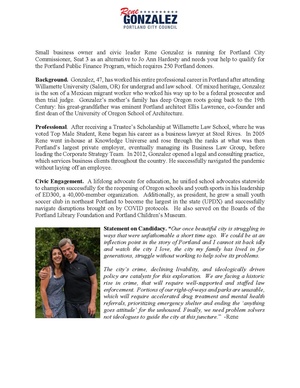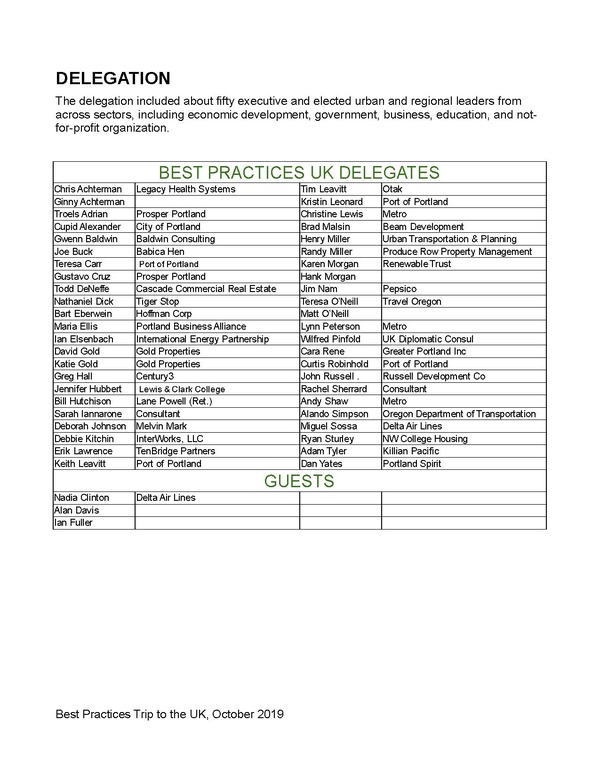Examples
Jump to navigation
Jump to search
| Presentation | Website |
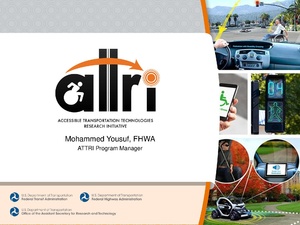
|
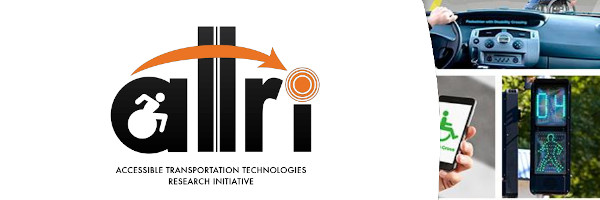
|
| A Blueprint for Public Wi-Fi Networks | ||
| The goals of the Global City Teams Challenge program are to bring together thought leaders and experts on a wide variety of topics relating to modern “Smart City” technologies and to have them share their knowledge and create best practices to assist those who are coming after them. The authors and contributors of this blueprint have designed, built, and managed Public Wi-Fi systems all over the United States and it is this spirit of collaboration and knowledge sharing that drives this effort forward. | ||

|
Accessible Transportation | |
| Accessible Transportation Technologies Research Initiative (ATTRI) a division of the USDOT seeks to remove barriers to transportation by leveraging advanced technology to enable people to travel independently anytime of the day to any destination, regardless of their individual abilities | ||

|
Built For Zero | |
| Built for Zero is a national movement whose methodology and support network assists communities in their journey to end homelessness. Collaboration and testing of ideas to improve outcomes are at the heart of the Built for Zero continuous improvement approach that has proven itself in communities across the United States and Canada. | ||
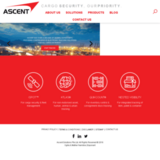
|
Cargo Tracking | |
| Secure and track your assets globally with Ascent Solutions™ and keep your business safe on the go. With this solution, you will gain visibility over your assets through live updates on its location and status. Further eliminate threats to cargo security and manage your assets better by receiving alerts in real time whenever the iSCOUT™ or the iSENSOR™ electronic seals securing your assets have been tampered. | ||

|
Civic Platform | |
| The CIVIC Platform is made possible by the Civic Software Foundation, a non-profit organization bringing data science, modern tech, and civic willpower together to create a force for public good. | ||

|
Community Investment Trust | |
| The Community Investment Trust is a first-of-its-kind financial inclusion tool created to empower residents and strengthen communities. The CIT is designed to remove barriers to financial inclusion and provide a low-dollar investment opportunity in a commercial property to local residents. | ||
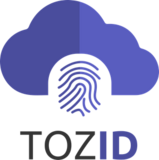
|
Cryptography | |
| Making data and identity security easy to use and private is our mission. We sweat every detail to ensure the best experience possible while maintaining the highest level of security. Tozny’s solution allows us to take that security to the next level, and ensures that our client’s most sensitive data is as protected as possible. | ||

|
DIRTT Modular Interiors | |
| Build the perfect interior space for what you need now –– and whatever the future brings. Designed to respond to your needs for any place, from healthcare to school or office to home life. This is digital construction at its best. | ||

|
Digital City Testbed Center | |
| The Digital City Testbed Center at Portland State University establishes a network of campuses in the Pacific Northwest where smart city technologies can be tested before being deployed in communities at large. | ||

|
DigitalTown | |
| DigitalTown is partnering with FreeUP Mobile to bring Free Wireless Service to US members of the DigitalTown movement. The deal includes a Free SIM Card and Free Wireless Service by using the FreeUP Rewards app on the nation’s largest 4G LTE network. | ||
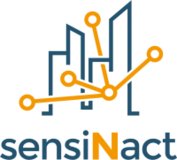
|
Eclipse Smart City | |
| The Eclipse sensiNact project consists of a software platform enabling the collection, processing and redistribution of any data relevant to improving the quality of life of urban citizens, program | ||
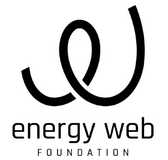
|
Energy Web Foundation | |
| Energy Web Foundation (EWF) has pioneered an enterprise-grade blockchain platform tailored to the sector’s regulatory, operational, and market needs. EWF is the world’s largest energy blockchain ecosystem—a growing community of over 100 energy market participants who we work with to bring energy blockchain solutions to market. The Energy Web has become the industry’s largest energy blockchain ecosystem and leading choice for decentralized technology powering the world’s energy future. | ||
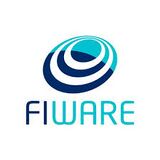
|
FIWARE Platform | |
| The FIWARE Community is an independent Open Community whose members are commited to materialise the FIWARE mission, that is: “to build an open sustainable ecosystem around public, royalty-free and implementation-driven software platform standards that will ease the development of new Smart Applications in multiple sectors”. The FIWARE Community is not only formed by contributors to the technology (the FIWARE platform) but also those who contribute in building the FIWARE ecosystem and making it sustainable over time. | ||

|
Go-Green Webinar | |
| GoGreen aims to help people understand the impact of small sustainable gestures on their communities through technology. It presents itself as a community rewards system where participating points providers can define actions that support their communities objectives and reward people for taking them. For the users they see a marketplace of options along with rewards based on secure blockchain based smart contracts for supportive behavior. | ||

|
Grid Power Overview | |
| Overview of grid power | ||

|
Hack Oregon | |
| Hack Oregon is a rapid prototyping lab in Portland Oregon, taking a creative approach to data projects that bring insight to complex issues in the public interest. We’re a nonprofit, our teams are made of volunteers, and all the work we do is open source. | ||

|
How By-Name Data Helps Communities End Homelessness | |
| The by-name list is a real-time, person-specific list of everyone experiencing homelessness. The by-name list provides communities with a full and real-time view of homelessness in their geography. Using this data, we will be able to triage individual cases, understand the broader patterns of homelessness in their community, and ensure that resources and efforts are driving down the overall number of people experiencing homelessness. | ||

|
Hybrid Cellular and Wi-Fi Networks | |
| What’s the value of automatic, secure Wi-Fi connectivity to a smart city? Mobile phone coverage in dense cities can suffer from blackspots and poor indoor performance. | ||
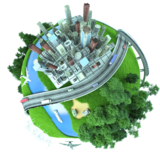
|
IES-City Framework | |
| Two barriers currently exist to effective and powerful smart city solutions. First, many current smart city ICT deployments are based on custom systems that are not interoperable, portable across cities, extensible, or cost-effective. Second, a number of architectural design efforts are currently underway (e.g. ISO/IEC JTC1, IEC, IEEE, ITU and consortia) but have not yet converged, creating uncertainty among stakeholders. To reduce these barriers, NIST and its partners convened an international public working group to compare and distil from these architectural efforts and city stakeholders a consensus framework of common architectural features to enable smart city solutions that meet the needs of modern communities. | ||
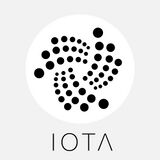
|
IOTA Enabling the Smart City | |
| IOTA’s Tangle is an open, feeless and scalable distributed ledger, designed to support frictionless data and value transfer. | ||

|
Inventing the Platform and Path to Sustainability Success | |
| Regenerative urbanism creates a balance where buildings, their occupants and the surrounding systems, both natural and man-made, work together to create resources rather than deplete them. Research shows that the integration of regenerative elements can yield greater returns over time. This approach uses dynamic governance systems to monitor and share the costs and benefits of urban life. It allows for multiple objectives to be achieved, from managing water and reusing waste biproducts to optimizing renewable resources across compact communities in new ways. | ||

|
Lessons from a Super-Aging Society | |
| Japan is 20 to 30 years ahead of the U.S. in terms of demographic change, knowledge, and experiences in addressing an aging society. This webinar hosts one of the world-leading gerontologists, professor Hiroko Akiyama, from the University of Tokyo. | ||

|
Making Government Contracting Better | |
| A modern economy needs a smart, data-driven government contracting ecosystem. Our mission is to bring governments, businesses, citizens and open data together to build one. | ||

|
Mobelizing Data to Create Data Markets | |
| The boundary between the physical and the digital has disappeared. Our health, our finances, our shopping, our things - they are now fully digitized and exist in the form of data. This webinar will discuss how this data can be mobelized to create markets. The presentation will discuss 2 case studies on the markets forming around finance and health data. | ||

|
Mobility Catalog | |
| Urban Planning and Smart Sustainable Urban Mobility are very important in the holistic vision of regions and countries. Mobility plays a key role in the current society being as important as basic services.From this, we drew the vision of building a Catalogue that would help cities, regions and countries to have a single, integrated vision for Urban Mobility. | ||

|
Neighborhood Data for Social Change Platform | |
| The Neighborhood Data for Social Change (NDSC) platform is a free, publicly available online resource for civic actors to learn about their communities. | ||
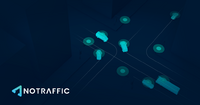
|
NoTraffic | |
| NoTraffic has developed the first AI-powered traffic signal platform that connects road users to the city grid, solving today’s traffic challenges while unlocking smart mobility benefits for the cities, and creating entire new way of life… | ||

|
OMG and IIC Structure and activities | |
| Stephen Mellor is the Chief Technical Officer for the Industrial Internet Consortium, where he directs the standards requirements and technology & security priorities for the Industrial Internet. In that role, he coordinates the activities of the several engineering, architecture, security and testbed working groups and teams. He also co-chairs both the Definitions, Taxonomy and Reference Architecture workgroup and the Use Cases workgroup for the NIST CPS PWG (National Institute for Standards and Technology Cyberphysical System Public Working Group). | ||

|
Open urban platform | |
| The open urban platform (OUP) is a new digital urban infrastructure, comprising a set of policy agreements, national and international legislation, standards and their technical implementation, under the direction of a local or other governmental authority. This meeting is an opportunity to discuss the Aim standardization advisory group with its Chair Frans Jorna, Director digital city and innovation City of Almere. | ||

|
Oregon State Data Strategy and Data Literacy Initiative | |
| The Oregon Data Strategy provides enterprise leadership and a long-term approach for how the State will govern data as a critical asset and critical infrastructure, along with direct actions over the coming biennium (2021-2023) to set Oregon on the path for success. | ||

|
Place Standard | |
| The Place Standard tool provides a simple framework to structure conversations about place. It allows you to think about the physical elements of a place (for example its buildings, spaces, and transport links) as well as the social aspects (for example whether people feel they have a say in decision making). | ||

|
Planning for Equitable Urban Density and Healthy Communities | |
| Through his leadership he has helped clients use sustainable urban design practices that give communities the greatest potential to create equitable and low carbon emitting neighborhoods. | ||

|
Private Data Objects | |
| As interest in Hyperledger Sawtooth grows, robust SDKs continue to be important for helping developers innovate on this blockchain platform. Since mobile is one of the most popular application platforms, it is crucial to extend Sawtooth to support native iOS and Android application development. | ||

|
Smart City Saitama | |
| We founded a consortium, called Smart City Project (SCP), inviting 27 global leading companies from each sector relevant to Smart City. At SCP, Smart City was defined based on 5 layers and 10 areas. This clarified at which segments each company’s solutions fall into. With bird’s eyes view across 5 layers / 10 areas, we examined solutions to ensure the entire optimization. | ||
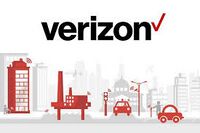
|
Smart Communities Traffic | |
| At Verizon, our goal is to help improve the quality of life for people living in cities around the world and increase the ways and efficiency in which cities operate. It’s not just about smart technology, connectivity or applications; it starts with a focus on the people and their basic wants and needs. We partner with each city to design infrastructure, systems and processes that elevate the way they provide services in new and cost-effective ways. | ||

|
Solid | |
| Solid is a new project led by Tim Berners-Lee, taking place at MIT. The project aims to radically change the way Web applications work today, resulting in true data ownership as well as improved privacy. | ||

|
Supporting Community Cooperation in Urban Design | |
| Engagement, Visioning, Master Planning, and Making Agreements are found in a process that communities use to make meaningful change in their neighborhood. Community stories are precedents demonstrating the value of integrating nature with development to sustain active and vital community-oriented neighborhoods. | ||

|
Teaching Open Source | |
| Professors from Western New England University and Drexel University share their knowledge, resources and experience teaching open source. | ||

|
Tecnologico Monterrey | |
| Through educational experiences Tecnológico de Monterrey form people who become agents of change willing to be even more competitive in order to benefit all, with a clear focus on being instead of having, on serving others instead of possessing things; people who are responsible for their own lives, aware of the fact that their actions may promote the transformation of others. | ||

|
The Evolution of the Built Environment | |
"At PGE, sustainability means business practices that support a vibrant economy, a healthy environment and strong communities today and into the future. It’s not a nice-to-have — it’s a must. As we make progress toward our environmental, social and governance goals, we’ll focus on how to become sustainable in everything we touch, including what we do for our customers."
| ||

|
The Library of Things at Clackamas County Libraries | |
| Eight Clackamas County public libraries have opened a "LIbrary of Things". Learn more about a "Library of Things and the eight Clackamas County Libraries that have opened one. | ||

|
Traffic Management by Blue City | |
| Blue City’s mission is to improve the transportation network efficiency, safety, and infrastructure planning with data from innovative real-time lidar data to provide accurate traffic data day or night, sun or snow. | ||

|
TriMet’s Hop Fastpass—Open Architecture in Fare Payment | |
| Hop’s open architecture allows TriMet to capitalize on changing technologies or falling costs, avoiding expensive, cumbersome negotiations with a proprietary systems integrator that is set-up to profit from changes to the fare payment system over time. | ||
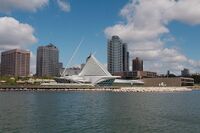
|
Milwaukee | |
| Milwaukee “has its swagger on.” It’s time Portland got its swagger on, too. Milwaukee, after many years of de-industrialization, population loss and civic problems (violent crime, inequality gap among residents, poorly performing public schools, many lead water pipes), etc. seems to be coming back. | ||
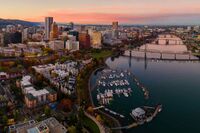
|
Portland Area | |
| Best practices trip to five municipalities in the Portland Metro Area. | ||
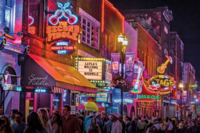
|
Trip to Nashville | |
| The past year has been challenging for Oregonians as we came together to face the intersecting crises of the COVID pandemic, the racial justice reckoning of the Black Lives Matter movement, and the climate crisis, including wildfires in our state. For Nashville, these crises were compounded by natural disasters and even a Christmas morning bombing that shook their downtown. | ||
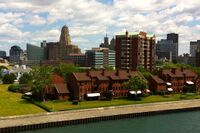
|
Trip to Buffalo | |
| Buffalo has had a history that basically has put them at the top and the bottom of the prosperity scale. Once thriving, with a population of 580,000, the city now has just 250,000 residents. The metro population of 1.1 million is less than half the size of metro Portland (2.6 million) | ||
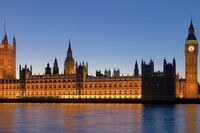
|
Trip to the United Kingdom | |
| Portland-region leaders from business, government and non-profit sectors traveled to England and Scotland in October 2019 to explore the way cities and urban regions—in various stages of economic development and transition—are addressing issues common to the Portland. | ||

|
Trip to San Francisco Bay Area | |
| For more than 100 years, the San Francisco Bay Area has been defined as the nine counties that surround greater San Francisco Bay. People living in the Bay Area, however, have not always acted as though they lived in a single region. | ||
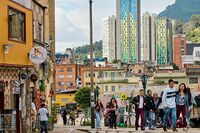
|
Trip to Colombia | |
| With over 50 million inhabitants Colombia is the third-most-populous country in Latin America, and the world’s third-most populous Spanish-speaking country. Its population is ethnically and linguistically diverse, with its rich multicultural heritage reflecting influences by several Amerindian civilizations, Spanish settlement, forced African labor, and immigration from Europe and the greater Middle East. Urban centers are concentrated in the Andean highlands and the Caribbean coast. | ||

|
Trip to Brooklyn | |
| Elements of Brooklyn’s revival – lower crime rates, public planning and investment, extensive existing transit system, existing housing stock proximity to the jobs and wealth of Manhattan – are unique to the area, but familiar variations on stories of urban revival in many other cities including Portland. | ||

|
Trip to Japan | |
| Japan is the 11th most populous country in the world, as well as one of the most densely populated and urbanized. About three-fourths of the country’s terrain is mountainous, concentrating its population of 126.2 million on narrow coastal plains. Japan is administratively divided into 47 prefectures and traditionally divided into eight regions. The Greater Tokyo Area is the most populous metropolitan area in the world, with more than 37.4 million residents. | ||

|
Trip to Denver | |
| Denver, the capital of Colorado, is an American metropolis dating to the Old West era. Larimer Square, the city’s oldest block, features landmark 19th-century buildings. Museums include the Denver Art Museum, an ultramodern complex known for its collection of indigenous works, and the mansion of famed Titanic survivor Molly Brown. Denver is also a jumping-off point for ski resorts in the nearby Rocky Mountains. | ||
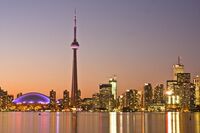
|
Trip to Toronto | |
| Toronto, the capital of the province of Ontario, is a major Canadian city along Lake Ontario’s northwestern shore. It’s a dynamic metropolis with a core of soaring skyscrapers, all dwarfed by the iconic, free-standing CN Tower. Toronto also has many green spaces, from the orderly oval of Queen’s Park to 400-acre High Park and its trails, sports facilities and zoo. | ||
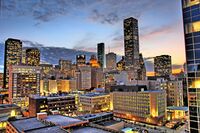
|
Trip to Houston | |
| Houston is a large metropolis in Texas, extending to Galveston Bay. It’s closely linked with the Space Center Houston, the coastal visitor center at NASA’s astronaut training and flight control complex. The city’s relatively compact Downtown includes the Theater District, home to the renowned Houston Grand Opera, and the Historic District, with 19th-century architecture and upscale restaurants. | ||
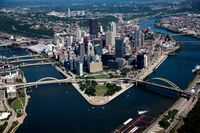
|
Trip to Pittsburgh | |
| The Pittsburgh of today ranks among the top places to live, work, and visit in the United States – consistently recognized with accolades from major travel and financial organizations as one of the most livable cities with one of the most viable economies. The city has ‘re-imagined and re-worked’ itself into a model urban success story. Moving from down and out to ‘rock star’ didn’t happen overnight…in fact it took 30 years! | ||

|
Trip to Israel | |
| On October 15th a delegation of over 30 from the greater Portland area arrived in Israel to undertake a one-of-a-kind international Best Practices Business Mission. The group was comprised of a diverse representation of political leaders, public sector decision makers, academia, and broad private sector interests. | ||

|
Trip to Atlanta | |
| The capital and most populous city of the state of Georgia. With an estimated 2019 population of 506,811 it is also the 37th most populous city in the United States. The city serves as the cultural and economic center of the Atlanta metropolitan area, home to more than 6 million people and the ninth-largest metropolitan area in the nation. Atlanta is the seat of Fulton County, the most populous county in Georgia. Portions of the city extend eastward into neighboring DeKalb County. The city is situated among the foothills of the Appalachian Mountains and has one of the highest elevations among major cities east of the Mississippi River. | ||
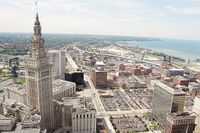
|
Cleveland | |
| Cleveland…a city that has reinvented itself from a dying rust belt town, to a world innovator in healthcare, bioscience, manufacturing and leveraging human capital through intergenerational leadership. Greater Cleveland is home to 24 fortune 1000 companies and currently has over $7 billion in construction in its urban core. Cleveland is an innovative city that fosters entrepreneurship and has developed a network of partners to develop and excel in the areas most critical to urban success – talent, connections, innovation and distinctiveness. | ||
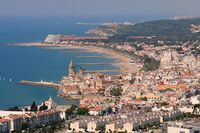
|
Trip to Spain | |
| On April 2nd, a 20+ person delegation from the Portland region traveled to Spain for its annual Best Practices trip. During the mission, delegates examined the challenges, issues, opportunities and accomplishments for two of Europe’s most fascinating cities…Madrid and Barcelona. Result – an invigorated appreciation for what can be accomplished when a region’s diverse communities and agendas work together for the benefit of all parties. | ||
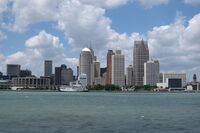
|
Trip to Detroit | |
| On October 24th, a 50+ person delegation from the Portland region traveled to Detroit for its annual Best Practices trip. Detroit is engaged in a multi-faceted, complex plan to reinvent itself. During the trip, delegates examined the challenges, issues, and opportunities facing Detroit. | ||

|
Trip to Minneapolis–Saint Paul | |
| Primary international markets: Canada, Scandinavia, UK/Germany, Japan | ||
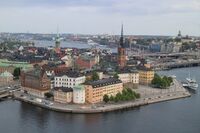
|
Trip to Scandinavia | |
| The trip’s focus was on sustainability, in which Scandinavia is a world’s leader | ||

|
Trip to Chicago | |
| Chicago presenters had passion and commitment to city’s agenda | ||
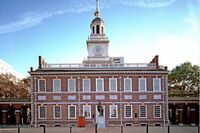
|
Trip to Philadelphia | |
| Philadelphia has a long rich history. The Philadelphia story is no longer just about its proud past, but more and more it’s about the present and the future. The public and private sectors have committed to regaining Philadelphia’s prominence as a Great City — the results to date are impressive: claiming the resources of the rivers for jobs, housing and amenities; leveraging resources to undertake signature development projects; conducting private sector-led fundraising campaigns to embark on major global marketing and economic development campaigns; working in regional collaboration. | ||
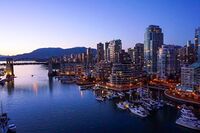
|
Trip to Vancouver BC | |
| The Vancouver best practices trip explored a wide range of topics – from tourism to urban design; from workforce to competitive business costs; from infrastructure to quality of life – this region continues to set high standards on how to grow a great city. | ||

|
Trip to Charlotte NC | |
| Charlotte is a major city and commercial hub in North Carolina. Its modern city center (Uptown) is home to the Levine Museum of the New South, which explores post–Civil War history in the South, and hands-on science displays at Discovery Place. Uptown is also known for the NASCAR Hall of Fame, which celebrates the sport of auto racing through interactive exhibits and films. | ||

|
Trip to Austin TX | |
| Best Practices Trip to Austin TX (March 2001) | ||
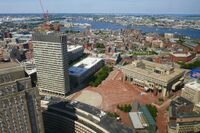
|
Trip to Boston | |
| Boston is a unique city, in that historic preservation is extremely important in its development . | ||

|
Trip to Washington DC and Baltimore | |
| Best Practices trip in 1991 to Washington, D.C. and Baltimore MD | ||

|
Trip to New York City | |
| A promotional trip, aimed primarily at business attraction, using the occasion of the inaugural Portland - NYC direct Delta Airlines flight to send a group of Portland “ambassadors” to meet with East Coast business executives. | ||
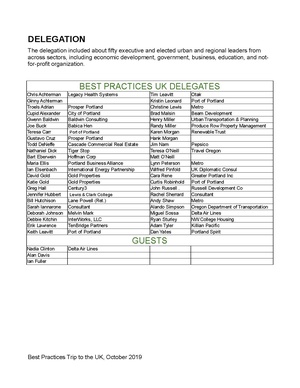
-->
